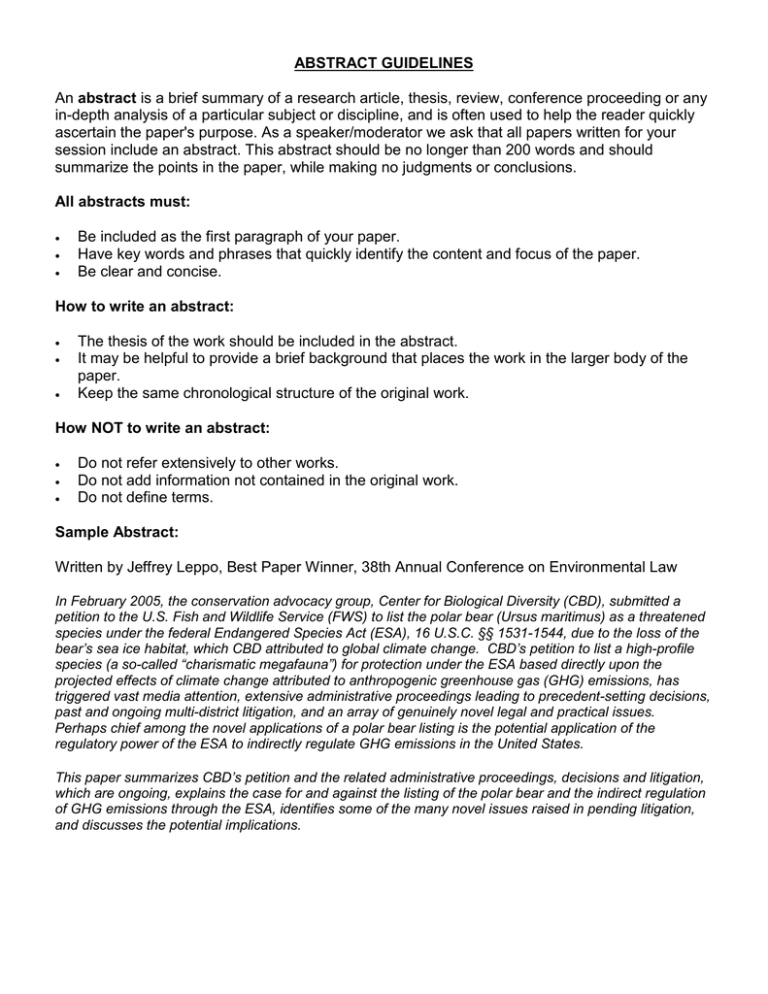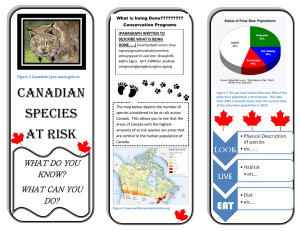ABSTRACT GUIDELINES An abstract is a brief summary of a
advertisement

ABSTRACT GUIDELINES An abstract is a brief summary of a research article, thesis, review, conference proceeding or any in-depth analysis of a particular subject or discipline, and is often used to help the reader quickly ascertain the paper's purpose. As a speaker/moderator we ask that all papers written for your session include an abstract. This abstract should be no longer than 200 words and should summarize the points in the paper, while making no judgments or conclusions. All abstracts must: • • • Be included as the first paragraph of your paper. Have key words and phrases that quickly identify the content and focus of the paper. Be clear and concise. How to write an abstract: • • • The thesis of the work should be included in the abstract. It may be helpful to provide a brief background that places the work in the larger body of the paper. Keep the same chronological structure of the original work. How NOT to write an abstract: • • • Do not refer extensively to other works. Do not add information not contained in the original work. Do not define terms. Sample Abstract: Written by Jeffrey Leppo, Best Paper Winner, 38th Annual Conference on Environmental Law In February 2005, the conservation advocacy group, Center for Biological Diversity (CBD), submitted a petition to the U.S. Fish and Wildlife Service (FWS) to list the polar bear (Ursus maritimus) as a threatened species under the federal Endangered Species Act (ESA), 16 U.S.C. §§ 1531-1544, due to the loss of the bear’s sea ice habitat, which CBD attributed to global climate change. CBD’s petition to list a high-profile species (a so-called “charismatic megafauna”) for protection under the ESA based directly upon the projected effects of climate change attributed to anthropogenic greenhouse gas (GHG) emissions, has triggered vast media attention, extensive administrative proceedings leading to precedent-setting decisions, past and ongoing multi-district litigation, and an array of genuinely novel legal and practical issues. Perhaps chief among the novel applications of a polar bear listing is the potential application of the regulatory power of the ESA to indirectly regulate GHG emissions in the United States. This paper summarizes CBD’s petition and the related administrative proceedings, decisions and litigation, which are ongoing, explains the case for and against the listing of the polar bear and the indirect regulation of GHG emissions through the ESA, identifies some of the many novel issues raised in pending litigation, and discusses the potential implications.

